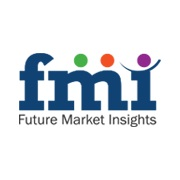Connected RHM (Remote Healthcare Monitoring) Market Analysis, Segments, Growth and Value Chain 2016-2026
Future Market Insights has announced the addition of the "Connected RHM (Remote Healthcare Monitoring) Market Analysis, Segments, Growth and Value Chain 2016-2026" report to their offering

Valley Cottage, NY -- (SBWire) -- 08/09/2019 --Connected RHM market is growing rapidly due increasing need of healthcare services for round the clock. Connected RHM solutions make use of healthcare monitoring devices to perform healthcare test on patient without any human intervention from anywhere at any time.
The health monitoring data can be sent by using an internet connection via a smartphone, tablet, smart devices etc. Connected RHM can collect a wide range of health related data such as vital signs, weight, blood pressure, blood sugar levels, blood oxygen levels, pulse rate, cardiovascular disease indicators, or any other disease indicators. Connected RHM can be most effective for patients requiring constant monitoring for their safety, such as elderly people or patients with mental disability. However, the biggest impact can be made when connected RHM is used for patients suffering from chronic illness who constitutes maximum percent of all hospital bed stay.
Download sample copy of this report:
https://www.futuremarketinsights.com/reports/sample/REP-GB-2492
Connected Healthcare Monitoring Market: Market Dynamics
Increasing old age population and increasing expenditure of developed and developing countries are the factors which will drive the market for connected RHM. According to WHO report, the proportion of the world's population over 60 years will nearly double from 12% to 22% during 2015 and 2050 and thus the demand for healthcare facilities to serve that aging population will increase, which in turn will increase demand for connected RHM technologies and solutions. Moreover, according to WHO statistical data on countries individual expenditure on healthcare facilities, all the developed and developing countries has increased their expenditure on healthcare and this trend is expected to continue because of rise in average age of the population. Countries such as China and India which together constitutes more than 30% of the global population and with the highest growth rates are expected to drive the market for connected RHM technology and solutions.
Connected RHM Market Segmentation
Segmentation of connected RHM on the basis of application:
Disease Monitoring: Disease monitoring includes monitoring of diseases such as cardiovascular diseases, chronic kidney ailments, cancer etc.
Vital Signs Monitoring: Vital sign monitoring includes monitoring of blood pressure, diabetes, body temperature, hypertension, pulse rate etc.
Wellness Management: This category includes monitoring of indicators such as weight monitoring, sleep disorder, fitness monitoring etc.
Segmentation of connected RHM on the basis of end user:
Hospitals
Laboratories
Blood Banks
Physician Clinics
Individual
Others
Segmentation of connected RHM on the basis of geography:
North America (U.S., Canada)
Latin America (Mexico, Brazil)
Western Europe (Germany, Italy, France, U.K, Spain, Nordic countries, Belgium, Netherlands, Luxembourg)
Eastern Europe (Poland, Russia)
Asia Pacific (China, India, ASEAN, Australia & New Zealand)
Japan
Middle East and Africa (GCC, S. Africa, N. Africa)
Regional Overview
Regional demand for connected RHM solutions is directly proportional to regions total population, populations average age and regions expenditure on healthcare facilities. Hence North America region is expected to dominate the global connected RHM market because of its increasing population size of the elderly and its highest total spending per person per year on health globally. North America region is expected to be followed by APAC and European region. According to WHO statistics, Japan's 30 % of the population are already over 60 years of age. Large population size of countries such as China and India and their increasing expenditure on healthcare facilities are the factors which are expected to drive APAC region with the highest CAGR in the global connected RHM market.
Growing old age population, rising nuclear families and independent living of individuals are some of the macro economic factors driving the demand for connected RHM. Other benefits from connected RHM driving the demand for improved patient care facilities, cost effective treatment, reduced need for hospital admissions as many patients suffering from chronic ailments want to remain at home as long as possible, reduced travel time from home to hospitals or to clinics, reduced costs associated with a routine checkup by helping the patients to manage their own care by checking the data generated by the monitoring devices etc. Costs associated with buying a range of technologies and devices under connected RHM are different for Hospitals, Laboratories, Blood Banks, Physician Clinics, Individual and others. Most of the patients are reluctance to use these devices because of their habits to see the doctor face to face for the treatment and anxiety about the administration of their medication and treatment, reluctance for the usage of the technology from doctors as currently they are not been reimbursed to monitor and assess data transmitted from a patients home, are some of the factor which will affect the demand for connected RHM technology.
Download Historical Data Points@
https://www.futuremarketinsights.com/checkout/2492
Key Players
Some of the major players in the field of connected RHM market includes Biotronik (Germany), Medtronic (Ireland), Philips Healthcare (Netherland), GE Healthcare (U.K), Wipro (India), Tech Mahindra (India), Honeywell Life Care Solutions (US) etc.
Media Relations Contact
Abhishek Budholiya
manager
Future Market Insights
1-347-918-3531
https://www.futuremarketinsights.com
View this press release online at: http://rwire.com/1255028